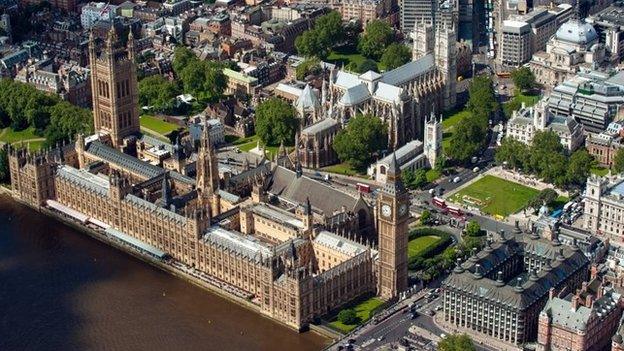Boundary reform: How is your area affected?
- Published
Detailed proposals for massive changes to parliamentary constituencies have been announced.
The plans are part of reforms which would see the House of Commons reduce from 650 MPs to 600. A public consultation is now under way and final proposals will not be made until 2018.
Breakdown by nation
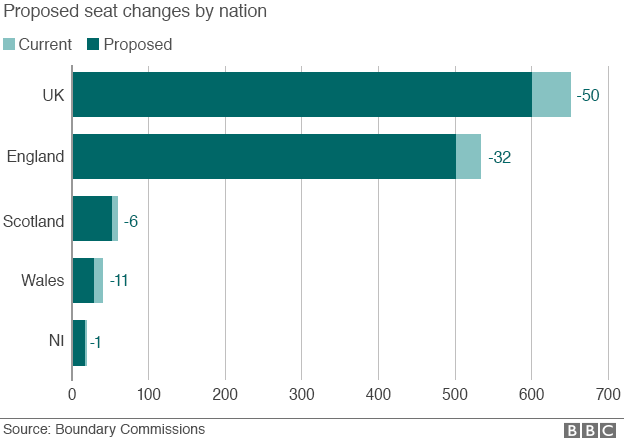
Under the proposals:
England would change from 533 seats to 501, losing 33 constituencies but gaining one when the Isle of Wight is divided into two seats.
Wales would lose 11 of its 40 seats, leaving it with 29. This is the biggest proportional change across the nations and reflects that fact that many of the Welsh constituencies have low numbers of registered voters. It would be the biggest single change to Wales' electoral map since the Boundary Commission was created in 1944.
Scotland, which will announce detailed proposals next month, would change from 59 seats to 53.
Northern Ireland has already unveiled its plans which see its constituencies reduce from 18 to 17.

Which constituencies are changing?
In England, all but 68 of the current 533 constituencies will see some change with 33 being abolished entirely.

The Isle of Wight will become two constituencies meaning that the net reduction in seats is 32.
Some of the changes are minor with single wards swapping constituency or boundaries simply becoming aligned with local authority divisions.

The North West loses seven constituencies and 14 of the current 75 remain unchanged.

The West Midlands loses six constituencies and seven remain unchanged.
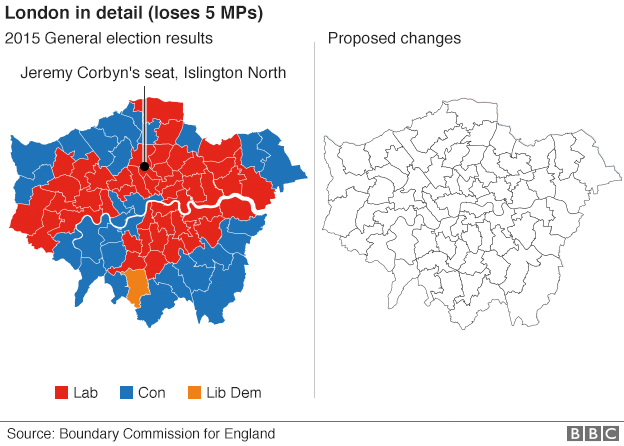
London loses five constituencies - so will end up with 68 rather than 73. Four constituencies remain unchanged. Jeremy Corbyn's seat Islington North is being divided between two new seats - Finsbury and Finsbury Park and Stoke Newington.

Every single constituency in Wales will change and 11 will disappear under the proposals. Sixteen existing constituencies would be wholly contained within new ones. Full proposals have been published by the Boundary Commission for Wales, external.
Breakdown across England
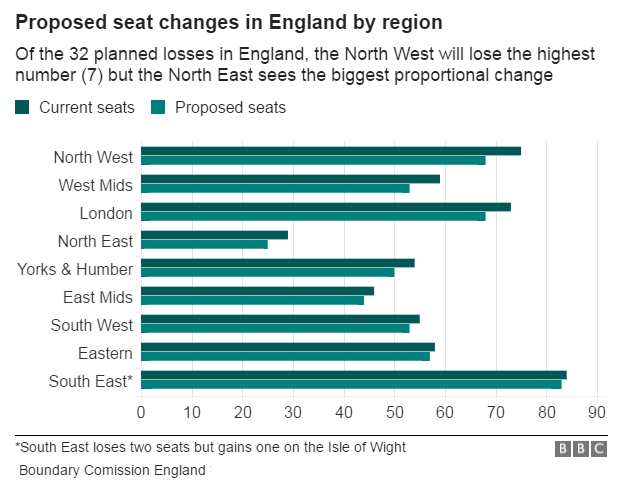
How the proposals were reached
Each constituency in the UK should contain roughly the same number of eligible voters, the so-called "electoral quota" which is reached by dividing the total electorate of the UK by the number of required constituencies.
After excluding the Isle of Wight and two Scottish island constituencies, the quota currently stands at 74,769, based on the electoral register as it stood on 1 December 2015.
This cut-off date has caused some controversy because the switch to individual electoral registration meant that 770,000 names dropped off the list.
However, the Electoral Commission has said that it is unclear how many of those were eligible voters and how many were just people who were no longer eligible through moving house or other reasons.
The list also does not reflect those who registered to vote ahead of the EU referendum in June.
Apart from the Scottish constituencies of Na h-Eileanan an Iar, Orkney & Shetland and Caithness, Sutherland & Easter Ross, all the smallest constituencies are in Wales.
The proposed reforms will see Wales reduced from its current 40 seats to 29 with no constituency left unchanged.
2015 election results map

Conservatives got 11.3 million votes and Labour 9.3 million - in third place was UKIP with 3.8 million

Changing populations
This map shows the areas with the biggest change in electorate between the 2010 and 2015 general elections.
As it shows change in numbers registered to vote rather than the whole population, it may reflect the new registration procedure as well as people moving from one area to another.
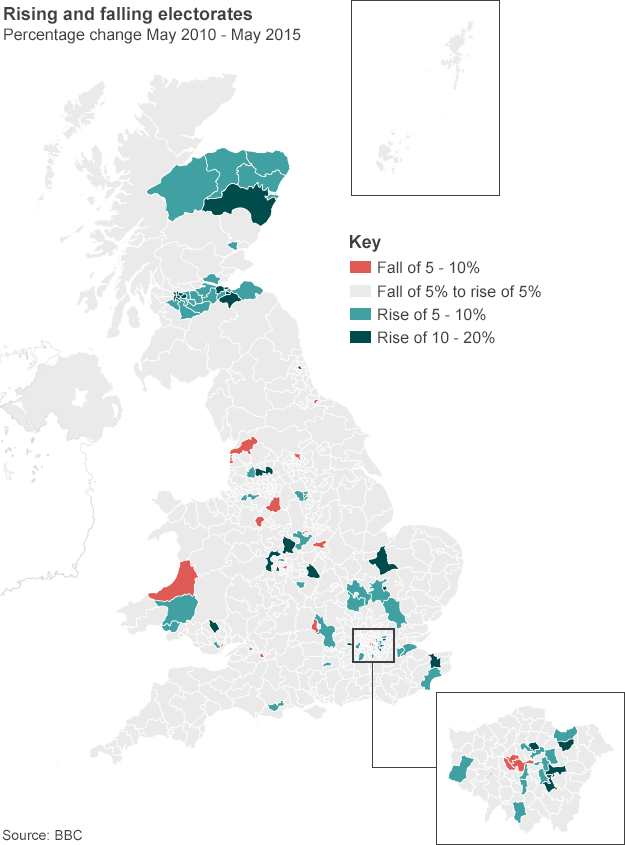

Produced by Christine Jeavans, John Walton, Ed Lowther and Gerry Fletcher
- Published29 January 2013
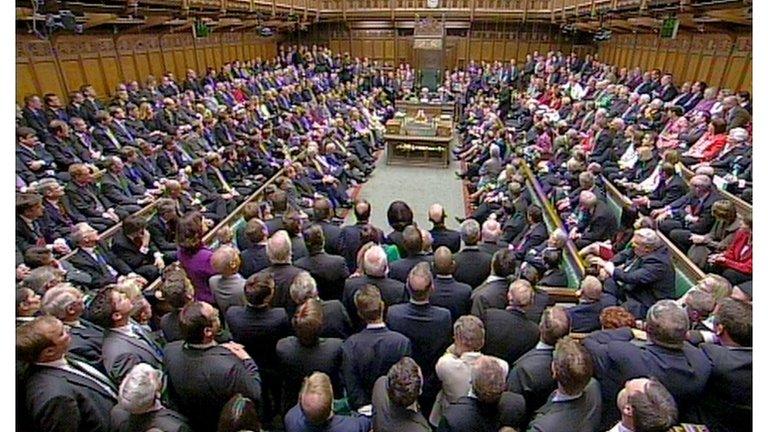
- Published29 January 2013
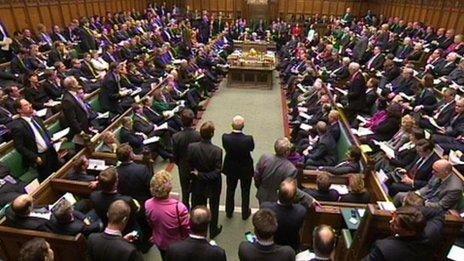
- Published4 May 2015
